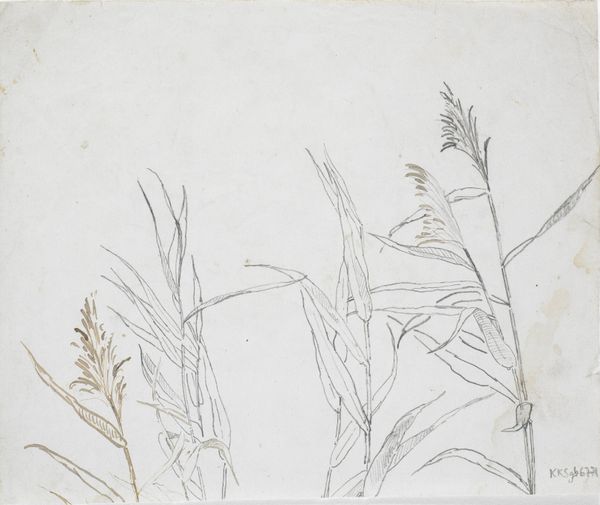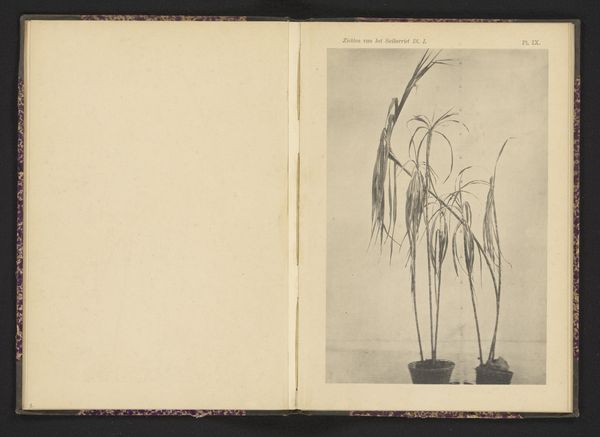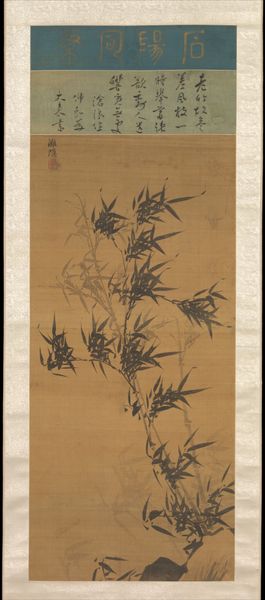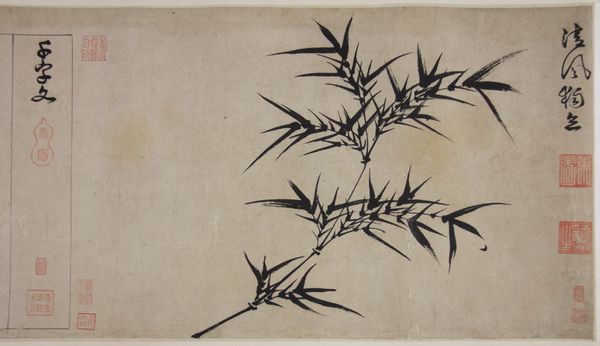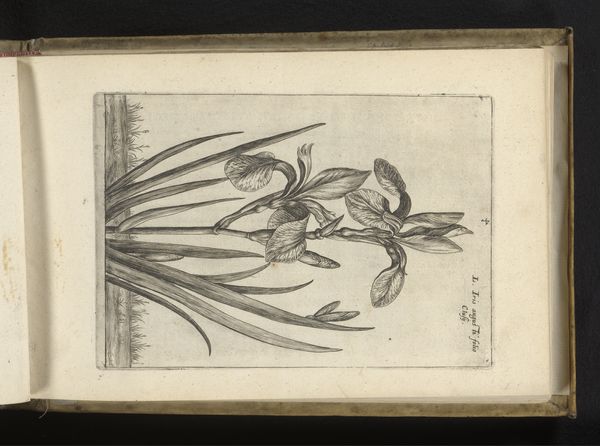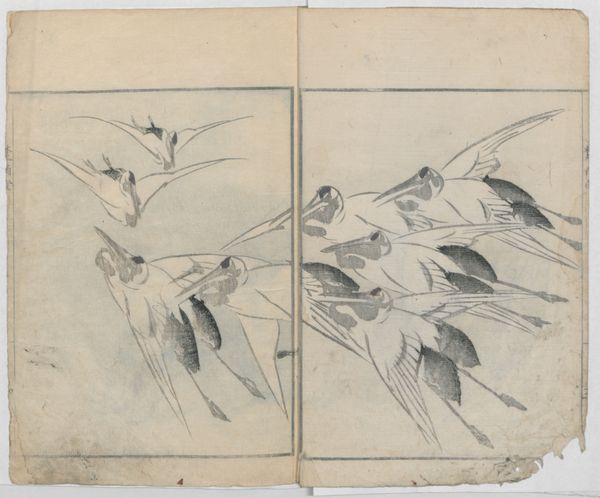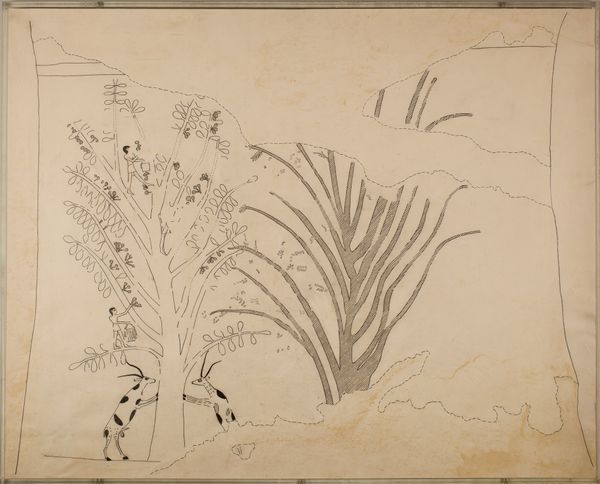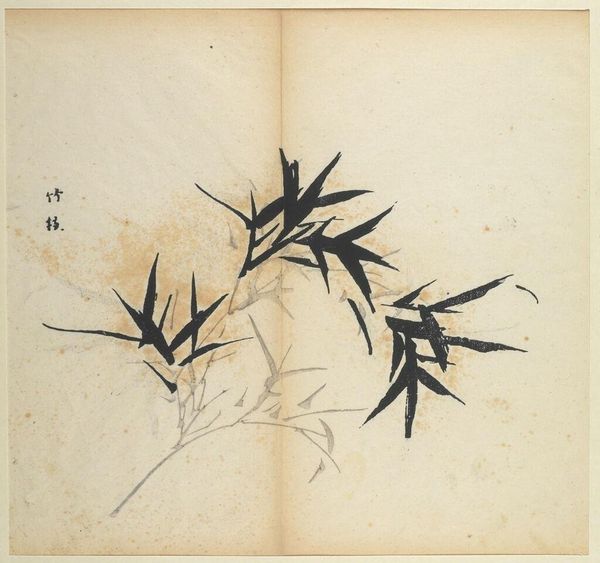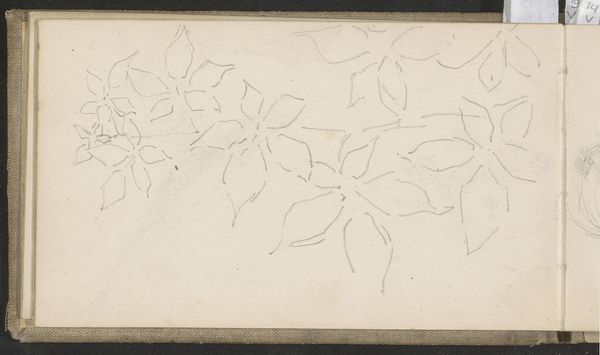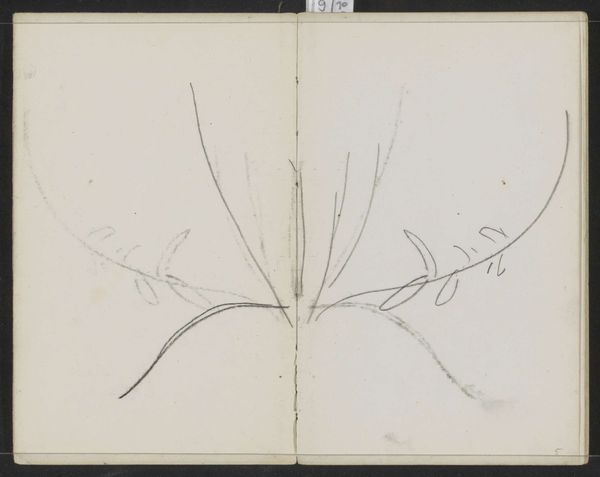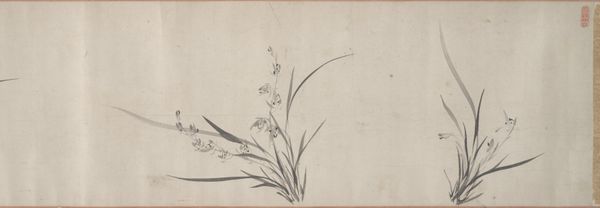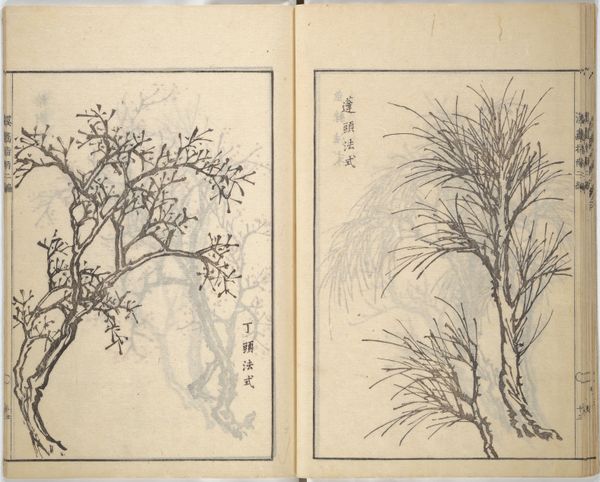
Sketches Reproduced from Works of Famous Artists 1814
0:00
0:00
drawing, paper, ink
#
drawing
#
ink drawing
#
pen drawing
#
book
#
asian-art
#
landscape
#
ukiyo-e
#
paper
#
ink
#
sketchbook drawing
Dimensions: Overall: 11 x 7 1/2 x 1/4 in. (27.9 x 19.1 x 0.7 cm) Overall (open): 11 x 13 3/4 in. (27.9 x 35 cm)
Copyright: Public Domain
Curator: Here we have "Sketches Reproduced from Works of Famous Artists" dating back to 1814, by Kawanabe Kyōsai. It’s an ink drawing on paper. What strikes you initially? Editor: The contrast. Stark black ink against the paper. It feels immediate, like a thought quickly captured, yet refined, very calming overall. Curator: Indeed. Kyōsai lived during a pivotal period in Japanese history, the late Edo and early Meiji eras, witnessing rapid social and political changes. How might this sketchbook drawing of bamboo speak to the complex period he inhabited? Editor: Bamboo has multifaceted symbolism. Traditionally it represents resilience, flexibility, and growth, but given Kyōsai's context, could this be a commentary on the forced opening of Japan to the West and resulting socio-economic shifts? The artist may be referencing the ability to adapt, bend and not break like bamboo in the storm, while maintaining its essence? Curator: Fascinating idea. His work often satirized contemporary society, even if couched in historical themes. The role of "famous artists" here is relevant to consider. Could his sketches here be viewed as the appropriation and disruption of established cultural symbols of art during turbulent times, rather than simple mimetic drawing? Editor: It does invite that question, doesn't it? To see established form not as stagnant rules, but resources ripe for evolution or reinterpretation within an changing cultural and economic context. The rapid movements happening during his lifetime were impacting art, style and audiences too, even forcing it to re-define itself! Curator: It would make sense as a form of quiet protest through art. Looking at it now with this added social dimension makes it quite powerful, and much less innocuous. Editor: I agree. It reminds me that art's perceived "simplicity" should never undermine its historical complexity or transformative capacity within society. A good reminder.
Comments
No comments
Be the first to comment and join the conversation on the ultimate creative platform.
